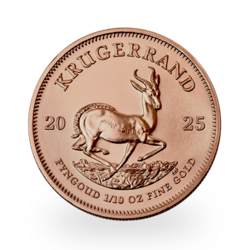For several decades now, the global economy has been on a headlong rush. It has been living on credit, both literally and figuratively. Financial deregulation in the 1980s created a financial bubble that never really burst. With each crisis, governments preferred to postpone the consequences with even more debt. In this context, a number of regulations came into being, notably the Basel rules, conceived as technical responses to a profound imbalance. The latest, Basel III, introduce a new element: the return of physical gold to the heart of the international financial system. As the United States plans to implement them from July onwards, the subject is back in the spotlight more than ever.
The Basel rules have been around for a long time. Their creation dates back to 1974, a period when the rise of the big banks was beginning to make them “too big to fail”. Three years earlier, the end of the gold standard marked a historic turning point, paving the way for a system in which unlimited indebtedness became permissible. The entry into this new world, disconnected from all realities, therefore required a minimum of regulatory requirements to be accepted... Under the aegis of the Bank for International Settlements, often referred to as the “central bank of central banks”, these rules guaranteed certain specific obligations, including a minimum equity-to-asset ratio. Only the largest banks were concerned.
These initial regulations subsequently underwent several changes: the first in 2004, then a second in the wake of the 2008 financial crisis. It's the latter that we're interested in today.
The latest, Basel III, involve new mechanisms adopted in 2010 and gradually implemented since then. They include increased capital requirements to prevent solvency crises, and sufficient liquidity to avoid sudden capital withdrawals. To protect the global economy, now vulnerable to any financial crisis, these rules require banks to finance their long-term assets with stable resources. So far, nothing revolutionary.
What really sets Basel III apart is the central place it gives to gold. Several elements are on the table. Firstly, 85% of the value of unallocated precious metals — not directly owned by the customer — held by banks must be covered by equity. This difference mechanically makes holding paper gold significantly more costly for banks, reducing its attractiveness, weakening gold derivatives, and prompting financial institutions to dispose of it. The announcement has also led to a scarcity of liquidity on platforms such as the LBMA and COMEX, as banks now have to prove that they actually hold the gold they declare. Audits have been carried out — the majority of gold traded on the markets is in paper form, with no physical existence. But banks hold very little real gold to cover massive commitments in paper gold, sometimes up to 100 times greater…
These new rules impose other obligations. Gold is now valued on banks' balance sheets at its market price, rather than at a historical or fixed value. This makes banks more sensitive to fluctuations in the yellow metal, as gains and losses cannot be hidden. Given that the current period is particularly favorable for gold, this further encourages banks to increase their reserves.
Finally, before Basel III, banks could only include 50% of the value of their physical gold in their capital. Now, they can account for the full amount, provided it is physically held. Gold has taken on the role of a very high-quality asset since it was recognized as such by the BIS — on a par with government bonds (officially, the safest financial asset). In fact, holding physical gold is becoming the preferred choice — especially at a time when the market is currently under severe pressure, a sign of its attractiveness (recent bullion shortages reported in London, partly due to massive transfers to New York). While paper gold is gradually losing its importance…
The latest Basel rules represent a real rupture. The line between physical and non-physical gold, whose speculative nature is no longer open to debate, is becoming increasingly blurred. Interest in physical gold is now driven not only by its independence and safe-haven value, but also by its regulatory compliance....
This craze continues the interest shown by central banks. It's worth recalling that they are buying gold on an ever-increasing scale, and last year their official purchases reached 1 045 tons, a record both historic and symbolic, since it exceeded 1 000 tons. These purchases, dominated by emerging countries, clearly testify to gold's growing importance in the international financial system.
In fact, we are witnessing a gradual erosion of confidence in the established monetary order. More precisely, it is the ability of governments to honour their debts, and the stability of currencies in a context of persistently high inflation, that are increasingly being called into question. This trend is accentuated by growing geopolitical tensions and competition between emerging powers, which only serve to fuel instability in the international system.
The need to rethink the international financial system is all the more evident with the entry into force of the Basel III rules. While the BIS is owned by 63 central banks, representing a total of 95% of the world's GDP, this “accounting reform” actually accelerates the steps towards reconfiguring the international monetary system.
Admittedly, the Basel III rules have not yet been adopted by everyone. While the majority have already adopted them (China, EU, UK, Switzerland, Singapore, etc), or at least partially, the USA only intends to comply with them from the summer of 2025, supplementing them until 2028. These rules were voted in back in 2010, in the wake of the financial crisis.
But this delay is a positive sign for gold. It is linked to the Trump administration's concerns about the hegemony of the dollar. As the adoption of Basel III leads to a revaluation of physical gold, this comes at the expense of fiat currencies, including the dollar. At a time when scarcity is becoming a new reality in the eyes of all, the yellow metal appears to be the first barrier against debt-currency. With the dollar already under serious threat (more so today than ever before), such an event would accelerate its decline, hence the reluctance of the world's leading power.
The Basel III rules therefore mark an unprecedented change. They are accelerating the gold craze, particularly among public institutions, as a sign of confidence for private investors. For their part, banks are likely to continue to increase their exposure to physical gold, while limiting their exposure to paper gold, in order to avoid capital requirements. The question then arises: will the availability of physical gold be sufficient? In a market where scarcity is increasing, this can only fuel a bullish momentum for the yellow metal…
Reproduction, in whole or in part, is authorized as long as it includes all the text hyperlinks and a link back to the original source.
The information contained in this article is for information purposes only and does not constitute investment advice or a recommendation to buy or sell.

















